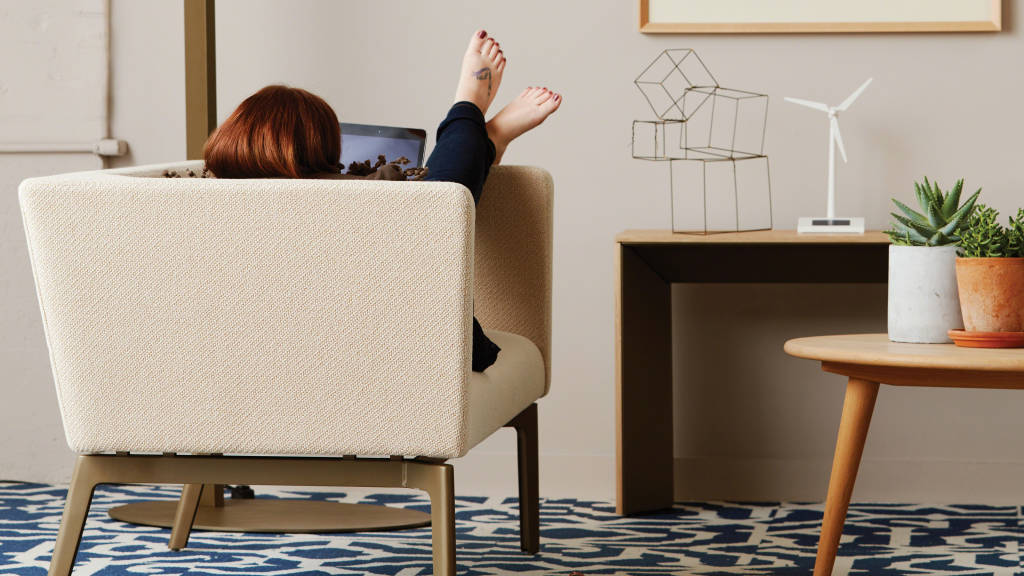
4 Questions to Ask Before Investing in Your Workspace by Steelcase
New ways of working are driving the demands for different kinds of spaces at work. People are looking for more informal, comfortable places to get work done. Workers want to feel like they can be themselves at work leading them to seek out spots that remind them of home. But, while a couch and a coffee table might look inviting, they don’t all survive the rigors of the workplace.
There are four questions you need to ask before investing in casual spaces. Whether it’s a bench, lounge chair, coffee table or something else — what works for a seating area at home doesn’t always work at the office.
Does it feel good?
Just because it looks good, doesn’t mean it feels good. But, at times, the lure of a cool vibe or a relaxing setting can cause people to set aside their physical wellbeing. It doesn’t have to be that way.
“Design, engineering and ergonomics need to all work together to make something beautiful that also performs,” says Rob Battey, Steelcase engineer. Battey and his colleagues spend a lot of time focused on improving performance.
A global posture study conducted by Steelcase sent people out with cameras to a number of cities including Munich, Kuala Lumpur, Tokyo, New York and Los Angeles. The images gathered allowed engineers and designers to see how people were using different spaces without any preconceived notions. As Battey tells it, people always surprise you.
“We went out to try to understand people and space. We wanted to let user behaviors inform the space solution.” The results of these global observations helped inform solutions for a variety of workplace behaviors such as collaboration.
Engineers also work with ergonomists to evaluate chairs, lounges and bench seating. Ergonomists live in the realm between doctors and engineers and are an important piece of the puzzle when it comes to creating the best comfort and fit. It’s one thing to create a nice sitting area where someone can host a quick, informal conversation. It’s quite another to create a work area where people can gather, spend time together and get real work done.
By applying the science of ergonomics to the new ways people want to work, it takes these settings up a notch — allowing them to be both beautiful and comfortable.
Can you plug in?
Is the area you’re planning to add to your workplace designed for working or waiting? If it’s for working, people need to be able to use the right tools to get their job done. On average, people carry three devices with them during the day. As mobile devices multiply, power needs escalate. If an area isn’t designed with the person in mind, you’ll end up finding people stuffed in a corner or sitting on the floor to get closer to power.
A well designed seating area considers how people need to work with technology. Power can be embedded in the furniture or stationed conveniently nearby to make sure people aren’t having to stoop under a bench or awkwardly reach behind a chair to access an outlet. In addition, there should be considerations given to the accessibility and ease around using the right technology. For example, is there a place for a laptop at the right height so that someone can comfortably sit, type and see the screen? These are some of the details that make the difference between creating an area for work versus an area to sit.
Will it hold up?
Never underestimate the creativity of the user. True, some people use spaces as they were intended. But, every time something new is developed, new user behaviors are discovered. That’s why Steelcase engineers turn to heavy users to do vigorous testing.
Field testing is done in college common areas and 911 dispatch centers. These kinds of places, like a workplace, get extreme use in a short period of time.
“Users can almost never tell you what they really want because they don’t even realize they have a problem,” says Battey. It’s only through years of observations and testing that designers and engineers can understand the problems they are trying to solve and provide solutions that will last.

